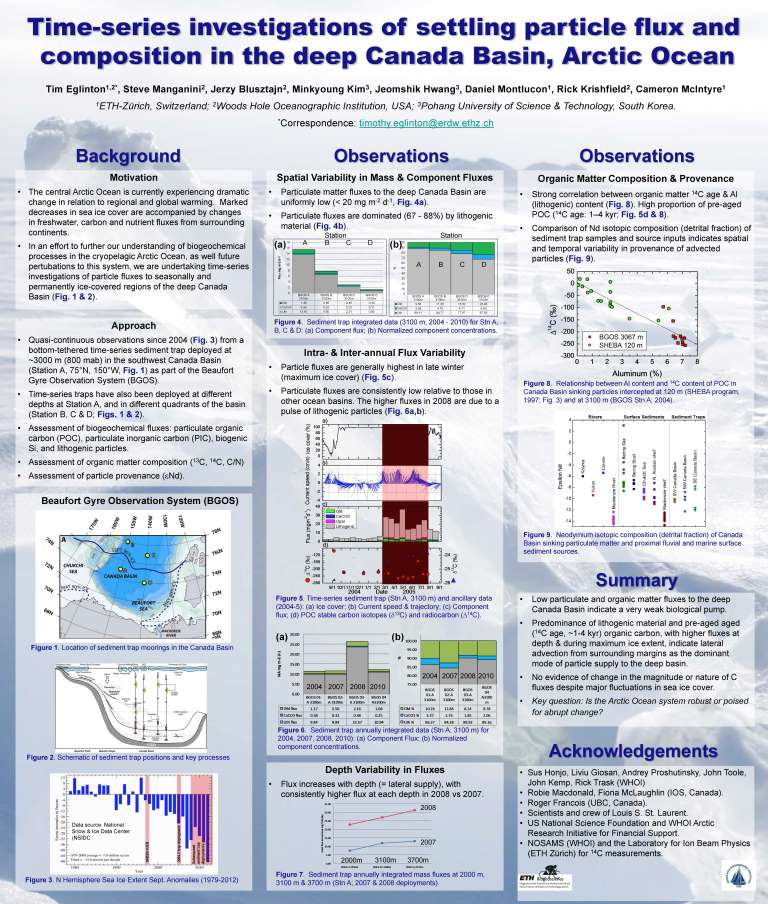Particle transport in the Beaufort Gyre region based on sediment trap observations
Understanding the processes driving the carbon cycle in the Arctic Ocean is important for assessing the impacts of the predicted rapid and amplified climate change in this region. The Beaufort Gyre Observational System supports sediment trap measurements in the region since 2004. This program team has analyzed settling particle samples intercepted by a time-series sediment trap deployed in the abyssal Canada Basin (at 3067 m) in order to examine carbon export to the deep Arctic Ocean. Strikingly old radiocarbon ages (apparent mean 14C age = ∼1900 years) of the organic carbon, abundant lithogenic material (∼80%), and mass flux variations temporally decoupled from the cycle of primary productivity in overlying surface waters together suggest that, unlike other ocean basins, the majority of the particulate organic carbon entering the deep Canada Basin is supplied from the surrounding margins.
Poster presentation showing major results of this program is available here.
References:
Hwang J., Eglinton T.I., Krishfield R.A., Manganini S.J. and Honjo S. (2008) Lateral organic carbon supply to the deep Canada Basin. Geophys. Res. Lett. 35, L11607.
Hwang J., Kim M., Manganini S.J., McIntyre C.P., Haghipour N, Park J., Krishfield R.A., Macdonald R.W., McLaughlin F.A., Eglinton T.I., (2015), Temporal and spatial variability of particle transport in the deep Arctic Canada Basin, J. Geophys. Res. Oceans, 120 (4).
